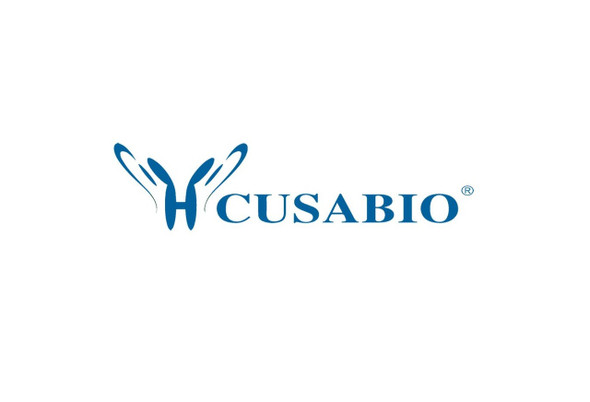Cusabio Rattus norvegicus Recombinants
Recombinant Rat E3 ubiquitin-protein ligase parkin (Park2) | CSB-EP864348RAb1
- SKU:
- CSB-EP864348RAb1
- Availability:
- 13 - 23 Working Days
Description
Recombinant Rat E3 ubiquitin-protein ligase parkin (Park2) | CSB-EP864348RAb1 | Cusabio
Alternative Name(s): Parkin RBR E3 ubiquitin-protein ligase (Park2)
Gene Names: Park2
Research Areas: Cell Biology
Organism: Rattus norvegicus (Rat)
AA Sequence: MIVFVRFNSSYGFPVEVDSDTSIFQLKEVVAKRQGVPADQLRVIFAGKELQNHLTVQNCDLEQQSIVHIVQRPQRKSHETNASGGDKPQSTPEGSIWEPRSLTRVDLSSHILPADSVGLAVILDTDSKSDSEAARGPEAKPTYHSFFVYCKGPCHKVQPGKLRVQCGTCRQATLTLAQGPSCWDDVLIPNRMSGECQSPDCPGTRAEFFFKCGAHPTSDKDTSVALNLITNNSRSIPCIACTDVRNPVLVFQCNHRHVICLDCFHLYCVTRLNDRQFVHDAQLGYSLPCVAGCPNSLIKELHHFRILGEEQYNRYQQYGAEECVLQMGGVLCPRPGCGAGLLPEQGQKKVTCEGGNGLGCGFVFCRDCKEAYHEGECDSMFEASGATSQAYRVDQRAAEQARWEEASKETIKKTTKPCPRCNVPIEKNGGCMHMKCPQPQCKLEWCWNCGCEWNRACMGDHWFDV
Source: E.coli
Tag Info: N-terminal 10xHis-tagged and C-terminal Myc-tagged
Expression Region: 1-465aa
Sequence Info: Full Length
MW: 56.7 kDa
Purity: Greater than 90% as determined by SDS-PAGE.
Relevance: Functions within a multiprotein E3 ubiquitin ligase complex, catalyzing the covalent attachment of ubiquitin moieties onto substrate proteins, such as BCL2, SYT11, CCNE1, GPR37, RHOT1/MIRO1, MFN1, MFN2, STUB1, SNCAIP, SEPT5, TOMM20, USP30, ZNF746 and AIMP2. Mediates monoubiquitination as well as 'Lys-6', 'Lys-11', 'Lys-48'-linked and 'Lys-63'-linked polyubiquitination of substrates depending on the context. Participates in the removal and/or detoxification of abnormally folded or damaged protein by mediating 'Lys-63'-linked polyubiquitination of misfolded proteins such as PARK7: 'Lys-63'-linked polyubiquitinated misfolded proteins are then recognized by HDAC6, leading to their recruitment to aggresomes, followed by degradation. Mediates 'Lys-63'-linked polyubiquitination of a 22 kDa O-linked glycosylated isoform of SNCAIP, possibly playing a role in Lewy-body formation. Mediates monoubiquitination of BCL2, thereby acting as a positive regulator of autophagy. Promotes the autophagic degradation of dysfunctional depolarized mitochondria by promoting the ubiquitination of mitochondrial proteins such as TOMM20, RHOT1/MIRO1 and USP30. Preferentially assembles 'Lys-6'-, 'Lys-11'- and 'Lys-63'-linked polyubiquitin chains following mitochondrial damage, leading to mitophagy. Mediates 'Lys-48'-linked polyubiquitination of ZNF746, followed by degradation of ZNF746 by the proteasome; possibly playing a role in the regulation of neuron death. Limits the production of reactive oxygen species (ROS). Regulates cyclin-E during neuronal apoptosis. In collaboration with CHPF isoform 2, may enhance cell viability and protect cells from oxidative stress. Independently of its ubiquitin ligase activity, protects from apoptosis by the transcriptional repression of p53/TP53. May protect neurons against alpha synuclein toxicity, proteasomal dysfunction, GPR37 accumulation, and kainate-induced excitotoxicity. May play a role in controlling neurotransmitter trafficking at the presynaptic terminal and in calcium-dependent exocytosis. May represent a tumor suppressor gene.By similarity Catalytic activityi
Reference: "Cloning of rat parkin cDNA and distribution of parkin in rat brain." Gu W.-J., Abbas N., Lagunes M.Z., Parent A., Pradier L., Bohme G.A., Agid Y., Hirsch E.C., Raisman-Vozari R., Brice A. J. Neurochem. 74:1773-1776(2000)
Storage: The shelf life is related to many factors, storage state, buffer ingredients, storage temperature and the stability of the protein itself. Generally, the shelf life of liquid form is 6 months at -20?/-80?. The shelf life of lyophilized form is 12 months at -20?/-80?.
Notes: Repeated freezing and thawing is not recommended. Store working aliquots at 4? for up to one week.
Function:
Involvement in disease:
Subcellular Location:
Protein Families:
Tissue Specificity:
Paythway:
Form: Liquid or Lyophilized powder
Buffer: If the delivery form is liquid, the default storage buffer is Tris/PBS-based buffer, 5%-50% glycerol. If the delivery form is lyophilized powder, the buffer before lyophilization is Tris/PBS-based buffer, 6% Trehalose, pH 8.0.
Reconstitution: We recommend that this vial be briefly centrifuged prior to opening to bring the contents to the bottom. Please reconstitute protein in deionized sterile water to a concentration of 0.1-1.0 mg/mL.We recommend to add 5-50% of glycerol (final concentration) and aliquot for long-term storage at -20?/-80?. Our default final concentration of glycerol is 50%. Customers could use it as reference.
Uniprot ID: Q9JK66
HGNC Database Link: N/A
UniGene Database Link: N/A
KEGG Database Link: N/A
STRING Database Link: N/A
OMIM Database Link: N/A






